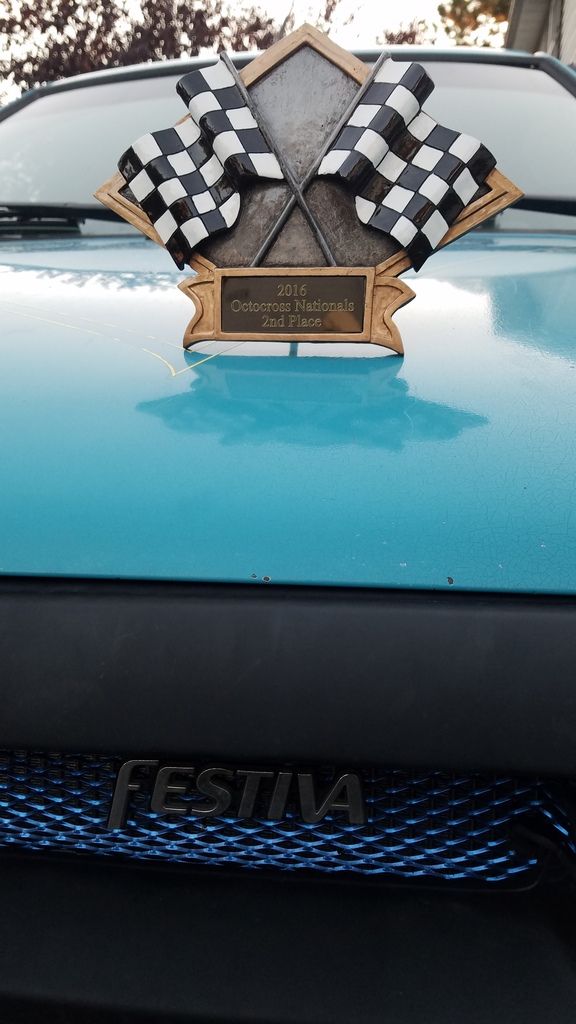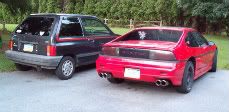Use the bosch valve from the audi. When it blows out you can replace it with a 1" forge (or suitable copy).
I prefer to divert the air into the turbo inlet pipe, as close to the turbo inlet as possible. The valve should be located as close to the throttle body as possible and it should get its signal from a designated (don't t into the signal line for other components) signal hose that is as close to the throttle valve as possible (plenum side of the valve though, not charge side like the DV).
A diverter valve is open more than it's closed. A majority of the time, air will be entering the engine through this valve. This is why the valve should be routed to a filtered location (i.e. the turbo inlet pipe.) The DV (diverter valve) job is to allow air to move freely when your intake manifold is under a vacuum. It's job is NOT to make noise or to "blow off extra boost". If you think of this valve simply as a pressure "blow off", your missing the concept behind turbocharging thoery. The valve is a way to maintain air velocity in the system. It also prevents compressor surge and stalling do to pressure spikes. Typical "blow off" valves are archaic and simply a flashy gimmick that aftermarket tuners sell because flashy junk is easier to sell than sound engineering.
When your intake manifold is under vacuum (i.e. partial throttle or closed throttle) the valve opens and allows air to flow freely. If the Turbo is spinning fast enough, air will flow out the valve and preferably back into to inlet of the turbo. If the turbo is not spinning fast enough, air will flow into the valve and supply the engine with fresh air that didn't have to go through the turbo and plumbing.
While under partial throttle, the valve may be partially open (if it's a good valve) and it will allow the turbo to spool up while not creating pressure. When the throttle is opened far enough (so that the intake manifold is no longer under vacuum) the diverter valve will close and the rapidly moving air will back up. That is what compresses the air to create boost pressure. Boost is the direct result of air speed and weight in a turbo system. This is what a turbocharger is referred to as a centrifugal supercharger. Centrifugal force is what compresses the air.
A blow off valve that makes a lot of stupid noises (those chirpy sounds are from compressor surge, which is not a good thing) will keep the air stagnant until the throttle opens and allows air speed to build.
Blow of valves, poorly sized turbochargers and excessively large charge coolers/piping are the worst things that you can do to a turbocharged engine. Examples of this type of misguided thoery have been sold as "high performance parts" by tuners (or salesmen rather) who are greedy and engineers who like to keep proper design a secret for those "in the know".
The original diverter valve circuit on the b6t is a good example of a proper diverter. The valve itself could be a bit closer to the throttle body, and there is a flow restrictor in the hose that can be removed (it's a silencer to quiet the whoosh noise), but the circuit is nicely designed. I replaced the factory valve with a forge 1" valve on our LeMons car, but kept the plumbing as stock (less the restrictor) as possible.
I prefer to divert the air into the turbo inlet pipe, as close to the turbo inlet as possible. The valve should be located as close to the throttle body as possible and it should get its signal from a designated (don't t into the signal line for other components) signal hose that is as close to the throttle valve as possible (plenum side of the valve though, not charge side like the DV).
A diverter valve is open more than it's closed. A majority of the time, air will be entering the engine through this valve. This is why the valve should be routed to a filtered location (i.e. the turbo inlet pipe.) The DV (diverter valve) job is to allow air to move freely when your intake manifold is under a vacuum. It's job is NOT to make noise or to "blow off extra boost". If you think of this valve simply as a pressure "blow off", your missing the concept behind turbocharging thoery. The valve is a way to maintain air velocity in the system. It also prevents compressor surge and stalling do to pressure spikes. Typical "blow off" valves are archaic and simply a flashy gimmick that aftermarket tuners sell because flashy junk is easier to sell than sound engineering.
When your intake manifold is under vacuum (i.e. partial throttle or closed throttle) the valve opens and allows air to flow freely. If the Turbo is spinning fast enough, air will flow out the valve and preferably back into to inlet of the turbo. If the turbo is not spinning fast enough, air will flow into the valve and supply the engine with fresh air that didn't have to go through the turbo and plumbing.
While under partial throttle, the valve may be partially open (if it's a good valve) and it will allow the turbo to spool up while not creating pressure. When the throttle is opened far enough (so that the intake manifold is no longer under vacuum) the diverter valve will close and the rapidly moving air will back up. That is what compresses the air to create boost pressure. Boost is the direct result of air speed and weight in a turbo system. This is what a turbocharger is referred to as a centrifugal supercharger. Centrifugal force is what compresses the air.
A blow off valve that makes a lot of stupid noises (those chirpy sounds are from compressor surge, which is not a good thing) will keep the air stagnant until the throttle opens and allows air speed to build.
Blow of valves, poorly sized turbochargers and excessively large charge coolers/piping are the worst things that you can do to a turbocharged engine. Examples of this type of misguided thoery have been sold as "high performance parts" by tuners (or salesmen rather) who are greedy and engineers who like to keep proper design a secret for those "in the know".
The original diverter valve circuit on the b6t is a good example of a proper diverter. The valve itself could be a bit closer to the throttle body, and there is a flow restrictor in the hose that can be removed (it's a silencer to quiet the whoosh noise), but the circuit is nicely designed. I replaced the factory valve with a forge 1" valve on our LeMons car, but kept the plumbing as stock (less the restrictor) as possible.





Comment